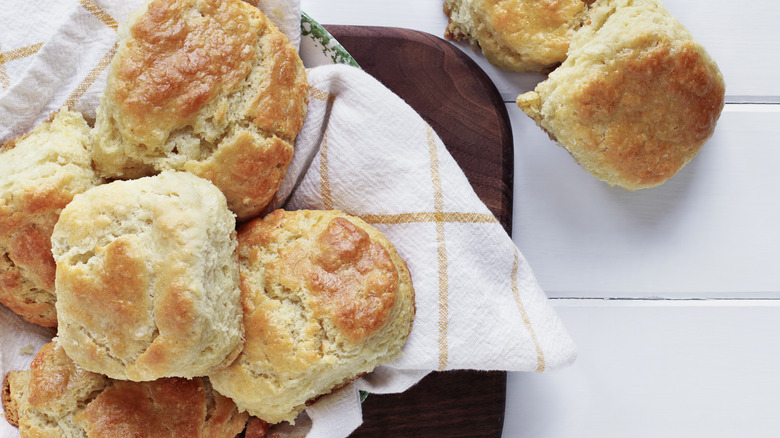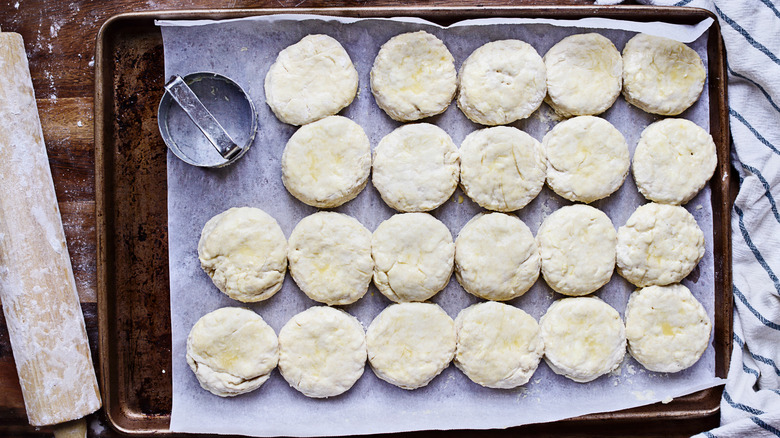Why The Size Of Your Butter Matters When Making Biscuits
There's no better way to start the morning than with a buttermilk biscuit — not only are they delicious, but they're an impressive pastry that's actually fairly easy to make from scratch. However, because they're so simple, making even the smallest changes to your recipe or routine can result in a different biscuit altogether. The way you incorporate the butter used in your biscuit recipe is a key example of this phenomenon.
In most cases, the ideal biscuit texture is flaky and tender — not crumbly and dry. According to Fine Cooking, the way you cut your fat into the flour is an important step in achieving this desired consistency. For anyone who's new to baking biscuits and other flaky pastries (such as pie dough), the site explained that "cutting the fat" refers to the process of first breaking down the butter into smaller pieces and then incorporating it into the flour. During that process, you can control the size that the pieces of fat will be in your finished dough.
How the size of the butter changes your biscuits
According to Fine Cooking, the smaller and more incorporated your pieces of butter are, the more crumbly your biscuits will be. Recipes that call for this type of thoroughly-incorporated, homogenous dough typically result in a tender, shortbread-like texture. However, to achieve the flakiness that's desired in a biscuit, you should hold off on cutting the fat so thoroughly. Instead, the publication recommends leaving some pea-sized pieces of butter along with the smaller, pieces.
That being said, having too-large pieces of butter in your dough can also pose problems. Specifically, Fine Cooking reported that baking biscuits when the pieces of butter are too big results can cause holes to pop up throughout your finished pastry. According to AllRecipes, pieces of butter that are too big can also cause the fat to be distributed unevenly throughout the dough. As a result, you may end up with floury, dense, and unevenly-baked biscuits.

